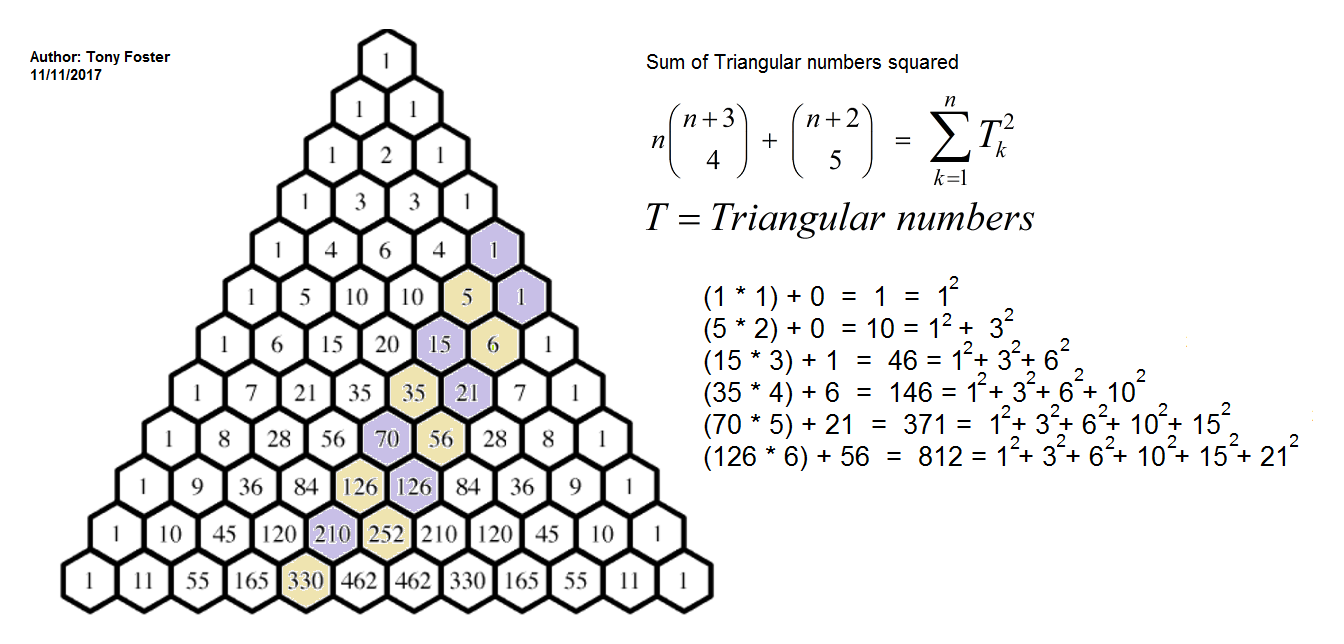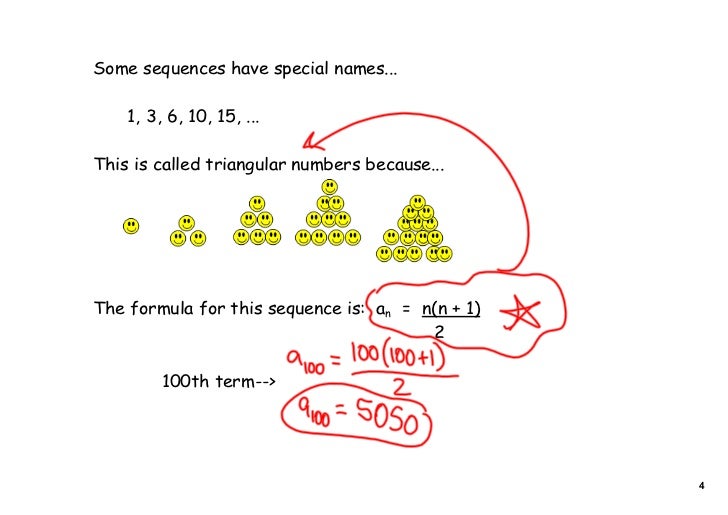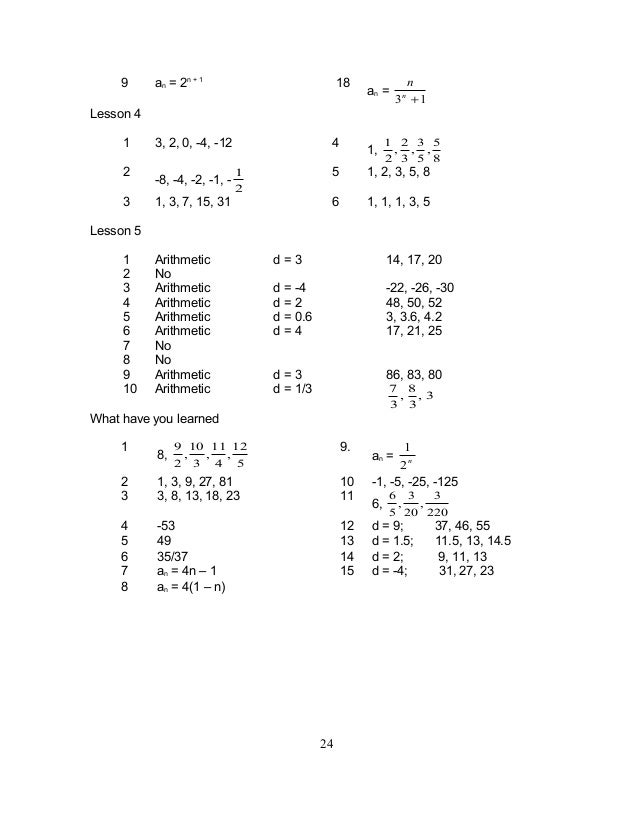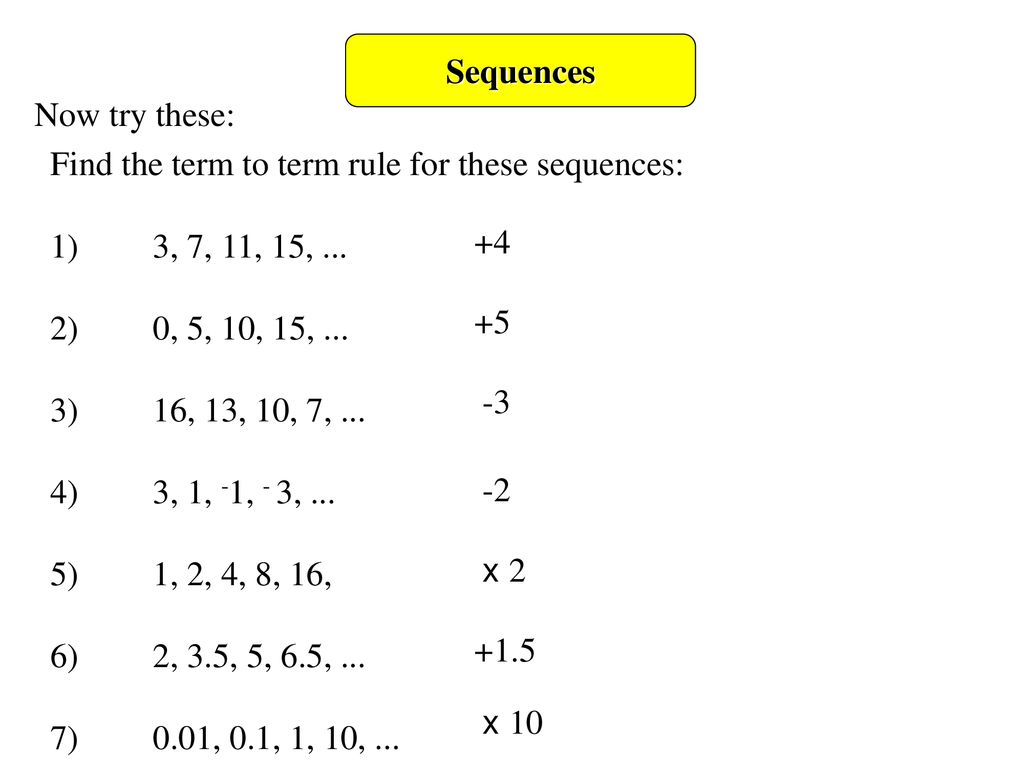0 1 3 6 10 Sequence

The second triangle has another row with 2 extra dots making 1 2 3.
0 1 3 6 10 sequence. This sequence starts at 10 and has a common ratio of 0 5 a half. The given sequence is. For learning calculations of mean values use mean calculator. Previous question next question get more help from chegg.
The sum of the first n terms s n of an arithmetic sequence is calculated by the following formula. The pattern is continued by multiplying by 0 5 each time. Find the next number in the sequence using difference table. By adding another row of dots and counting all the dots we can find the next number of the sequence.
If not what is it. Is an arithmetic progression with common difference of 2. It is simply the number of dots in each triangular pattern. Recamán s sequence 0 1 3 6 2 7 13 20 12 21 11 22 10 23 9 24 8 25 43 62 subtract if possible otherwise add.
User must not confuse it with mean values and significant values. Get 1 1 help now from expert other math tutors. The first triangle has just one dot. The sequence of 1 3 5 7 9 11.
1 2 3 4 5. Color blue 0 1 3 6 10 write down the sequence of differences of that sequence. We can derive an explicit formula by examining sequences of differences. For n 0 a n a n 1 n if that number is positive and not already in the sequence otherwise a n a n 1 n whether or not that number is already in the sequence.
Please enter integer sequence separated by spaces or commas. A finite sequence does not determine a unique formula but in this particular case there are enough terms to see an intended pattern. Color blue 1 2 3 4. But the common ratio can t be 0 as we get a sequence like 1 0 0 0 0 0 0.
Formula sequence 1 3 6 10 15. A n a 1 n 1 d. 1 3 6 10 15 21 28 36 45. This is a quick method for finding the nth term of a series which does not have a regular common difference.
None of the above.
















